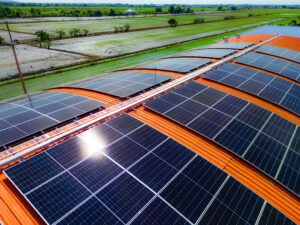The Red Sea has been heating up as Houthi attacks against commercial shipping vessels continue in protest at the Israel-Hamas war.1 Allegedly backed by Iran and Hezbollah, the Houthis, a militant group from Yemen, have attacked more than 30 boats travelling along trade routes since November.2 While the Houthis have claimed that these attacks solely target boats owned or affiliated with Israel, many of the recent attacks are reported to have been indiscriminate.1 In response, both the UK and the US have deployed targeted airstrikes against Houthi targets in Yemen and the US has deployed a naval presence. 1
The Red Sea serves as a key route for 15% of global maritime trade. 1 However, given the current dangers and uncertainty, more than 60% of global shipping now avoids the area.2 Instead, boats and trade have been rerouted around Africa, adding an additional 2-week delay and an estimated $1 million in operating costs, as reported by Dryad Global.2
IMPLICATIONS:
Unsurprisingly, the unrest in the Red Sea has increased production and logistics costs by up to 30-40%.3 This is likely to be passed on to consumers, with higher selling prices and longer delivery times on the agenda.4Inflation may be joined by further energy costs, as oil exports and imports will likely be affected by the attacks.4Indeed, disruptions to global trade are likely to be significant, with the attacks providing the largest disruption to the global supply chain since the pandemic. The International Monetary Fund now estimates that transit volume has decreased through the Suez Canal – connected to the Red Sea via the Mediterranean Sea – by 37% in January 2024.4 Conversely, the Cape of Good Hope, a key landmark of the replacement trading route, has seen transit volume increase by approximately 54%.4 Despite attacks by the US and the UK, the Houthis have committed to continuing their assaults, generating fears that trade disruptions in the Red Sea may become a long-term phenomenon and continue to escalate until the conflict between Israel and Gaza is resolved. In the meantime, Indonesia can expect its supply chain and global trade to be subject to delays and increased costs, with access to many of its trading partners restricted by diverted trade routes.
[1] BBC, (2024), “Who are the Houthis and Why are They Attacking Red Sea Ships?” BBC News, January 24. Retrieved: https://www.bbc.com/news/world-middle-east-67614911
[2] Blair, Alex, (2024), “Red Sea: Cross-Sector Supply Chain Disruption For “A Few Months at Least,” Ship Technology, January 19. Retrieved: https://www.ship-technology.com/news/red-sea-cross-sector-supply-chain-disruption-for-a-few-months-at-least/?cf-view
[3] Nur, Audina, (2024), “Businesses Wary of Red Sea Conflict, Impacts on Export and Import,” Indonesia Business Post, January 15. Retrieved: https://indonesiabusinesspost.com/risks-opportunities/businesses-wary-of-red-sea-conflict-impacts-on-export-and-import/
[4] Sugiura, Alexander, and Holder, Sarah, (2024), “How Yemen’s Houthi Attacks Are Hurting the Global Supply Chain,” Bloomberg News, January 23. Retrieved: https://www.bnnbloomberg.ca/how-yemen-s-houthi-attacks-are-hurting-the-global-supply-chain-1.2025664






